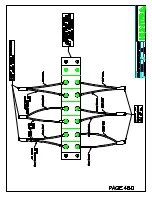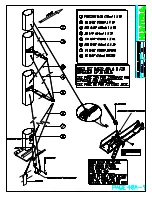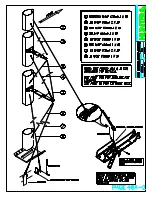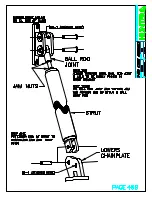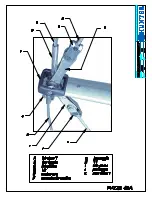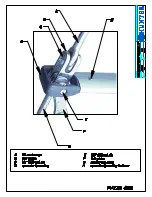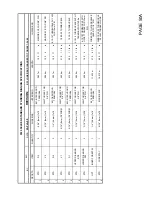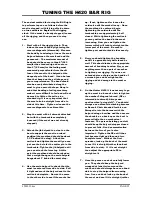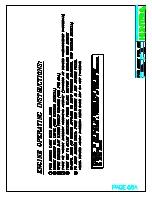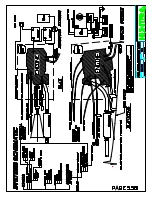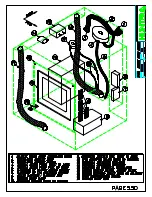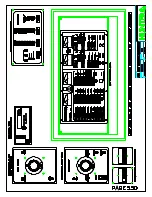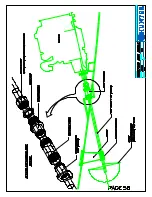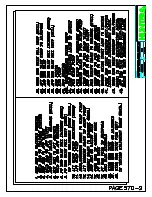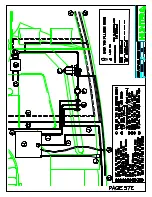
TUNING THE H420 B&R RIG
4208052.doc
PAGE 52
.
The easiest method for tuning the B&R rig is
to perform step one as follows before the
mast is stepped, with it lying aft side down
on two sawhorses. Begin with all rigging
slack. If the mast is already stepped, loosen
all the rigging, and then proceed to step
one.
1. Start with all the rigging slack. Then
induce the mast bend by tightening the
reverse diagonals (diamonds). Measure
the bend by tensioning a line or the main
halyard between the masthead and the
gooseneck. The maximum amount of
bend should be no more than 8
”
(203
mm)for the standard rig and no more
than 2
”
(50 mm) for the furling mast
measured perpendicular from the aft
face of the mast to the halyard at the
deepest part of the bend. It can be less
than that based on the sail shape and
your own preference. The bend should
also be evenly distributed along the
mast to give a smooth shape. Keep in
mind that bending a furling mast may
make it more difficult to furl and will not
do much to flatten the sail as in a
standard rig. It is very important that
the mast also be straight from side to
side at this time. Tighten or loosen the
reverse diagonals to achieve this.
2. Step the mast with all shrouds attached
but with the turnbuckles completely
loosened (if the mast was not already
stepped).
3. Attach the jib halyard to a cleat on the
bow to support the mast in a raked
position (the masthead should be about
1-1/2
’
behind the step). Attach the
verticals and tighten them until you can
just see the hole for the cotter pin in the
turnbuckle. Tighten the jib halyard until
you can attach the forestay. At this
point the masthead should be raked so
that a weight hung on the main halyard
hangs about 1
’
behind the mast step.
4. Use the main halyard to check that the
mast is centered from side to side. Pull
it tight and mark the halyard next to the
verticals chainplate. Now do the same
to the other side to see if the marks line
up. If not, tighten and/or loosen the
verticals until the marks line up. Once
the masthead is centered, begin
tightening the verticals until the
turnbuckles are approximately half
closed. While tightening the verticals
you may notice the bend in the mast
increasing. Now you can tighten the
lowers which will tend to straighten the
lower part of the mast. Be sure to
tighten port and starboard sides evenly.
5. Now you should tighten the headstay
until it is approximately half closed as
well. This should induce the appropriate
amount of headstay tension.
Never
use
anything more than a pair of wrenches
to tighten your rigging. If you use an
extended piece of pipe on the handle of
a wrench you can over tighten the
rigging and do damage to the mast or
rigging.
6. On the Hunter H420 it is necessary to go
up the mast in a bosun
’
s chair to tighten
the number 2 diagonal shroud (D2 or
intermediate shroud). Always use
caution when
“
going aloft
”
. You should
always use a mountain climbing harness
or Bosun
’
s Chair intended for this use.
Always tie into the harness with the
halyard using a bowline and then secure
the shackle as a back up as the knot is
more reliable than a mechanical
fastener. The person hoisting you aloft
should keep the halyard stopper closed
to prevent falls. Good communication
between the two of you is also
important. Tighten the D2 until it has
just become tight and then add two
complete turns. While at the first
spreader, look up the back of the mast
to see if it is straight.(rather than bent
from side to side). If it is not straight
then adjust the appropriate D2 to
straighten it.
7. Have the person on deck carefully lower
you. They should keep the halyard
wrapped at least twice around the
winch and should always have one hand
able to stop the halyard from running
free. Once on deck look up the back of
the mast and see if it is straight (rather
Summary of Contents for sailing yacht
Page 28: ......
Page 39: ......
Page 40: ......
Page 41: ......
Page 43: ......
Page 46: ......
Page 47: ......
Page 48: ......
Page 49: ......
Page 50: ......
Page 51: ......
Page 52: ......
Page 53: ......
Page 54: ......
Page 55: ......
Page 56: ......
Page 57: ......
Page 58: ......
Page 59: ......
Page 62: ......
Page 63: ......
Page 64: ......
Page 65: ......
Page 67: ......
Page 68: ......
Page 69: ......
Page 70: ......
Page 71: ......
Page 74: ......
Page 77: ......
Page 78: ......
Page 79: ......
Page 80: ......
Page 81: ......
Page 82: ......
Page 83: ......
Page 84: ......
Page 85: ......
Page 86: ......
Page 87: ......
Page 88: ......
Page 89: ......
Page 90: ......
Page 91: ......
Page 92: ......
Page 93: ......
Page 94: ......
Page 95: ......
Page 96: ......
Page 97: ......
Page 98: ......
Page 99: ......
Page 100: ......
Page 101: ......
Page 102: ......
Page 103: ......
Page 104: ......
Page 105: ......
Page 106: ......
Page 107: ......
Page 108: ......
Page 109: ......
Page 110: ......
Page 111: ......
Page 112: ......
Page 113: ......
Page 117: ......
Page 118: ......
Page 119: ......
Page 122: ......
Page 123: ......
Page 124: ......
Page 129: ......
Page 130: ......
Page 131: ......
Page 132: ......
Page 133: ......
Page 134: ......
Page 135: ......
Page 136: ......
Page 137: ......
Page 138: ......
Page 139: ......
Page 140: ......
Page 141: ......
Page 142: ......
Page 143: ......
Page 144: ......
Page 145: ......
Page 146: ......
Page 147: ......
Page 148: ......
Page 149: ......
Page 150: ......
Page 151: ......
Page 152: ......
Page 153: ......
Page 154: ......
Page 155: ......
Page 156: ......
Page 157: ......
Page 158: ......
Page 159: ......
Page 160: ......
Page 161: ......
Page 162: ......
Page 163: ......
Page 164: ......
Page 165: ......
Page 166: ......
Page 167: ......
Page 168: ......
Page 169: ......
Page 170: ......
Page 171: ......
Page 174: ......
Page 175: ......
Page 176: ......
Page 177: ......
Page 178: ......
Page 179: ......
Page 180: ......




